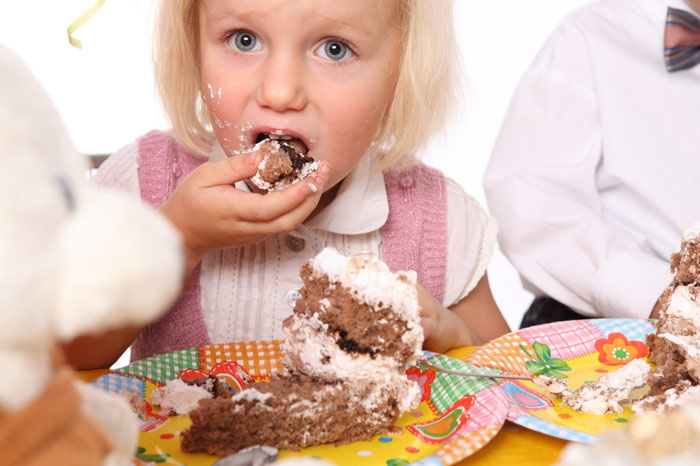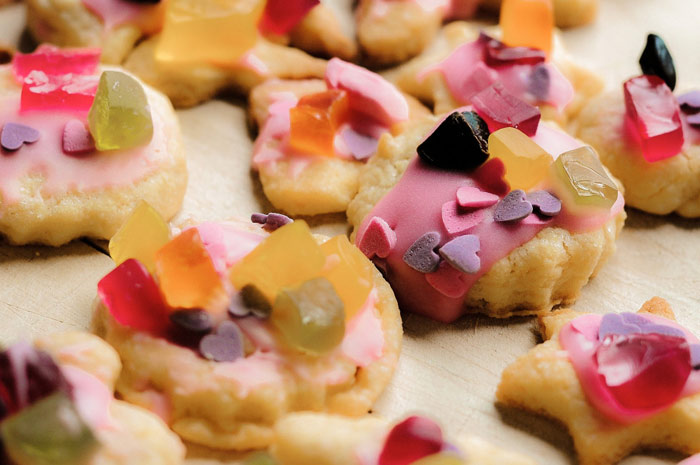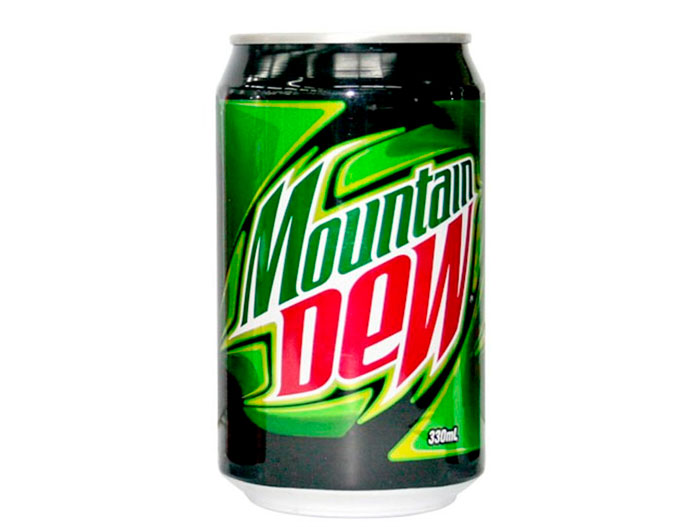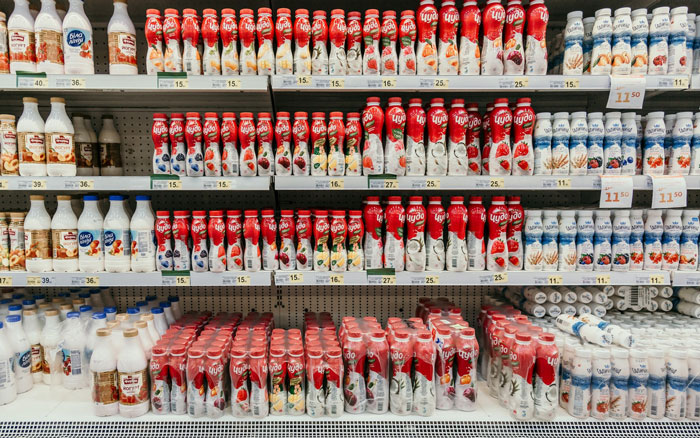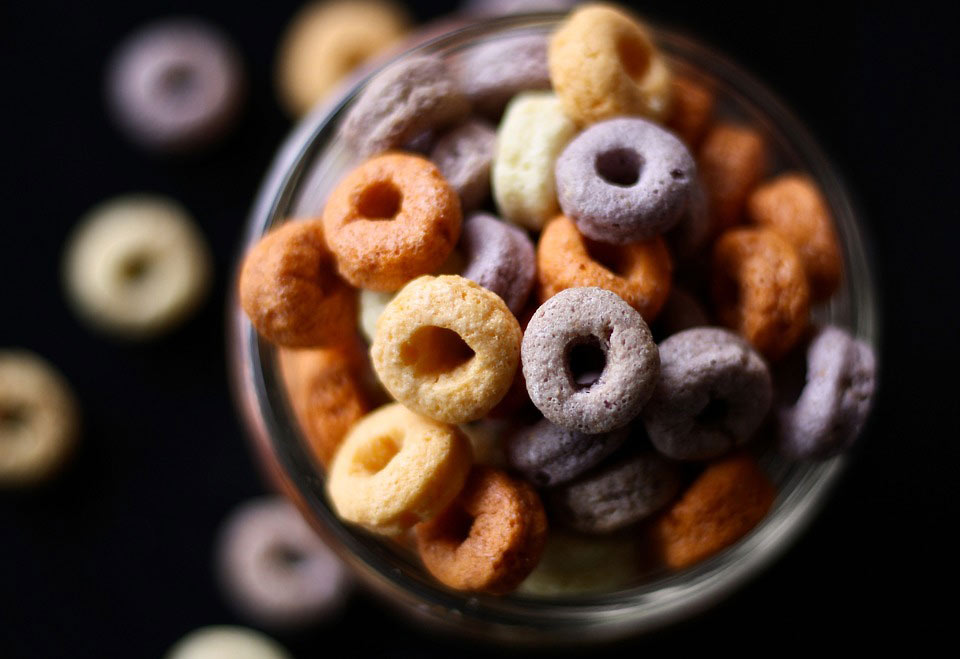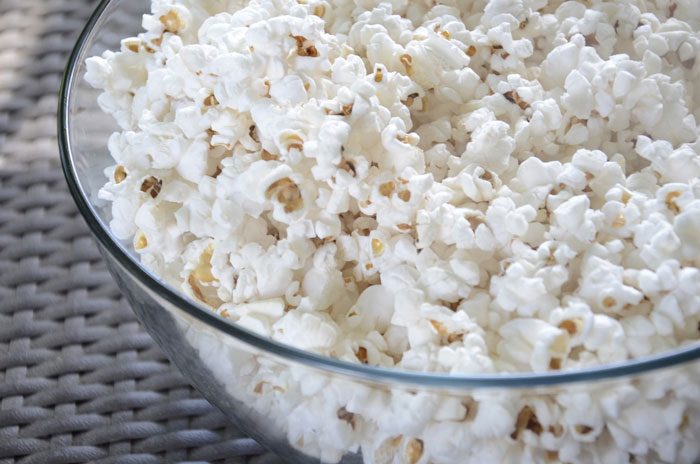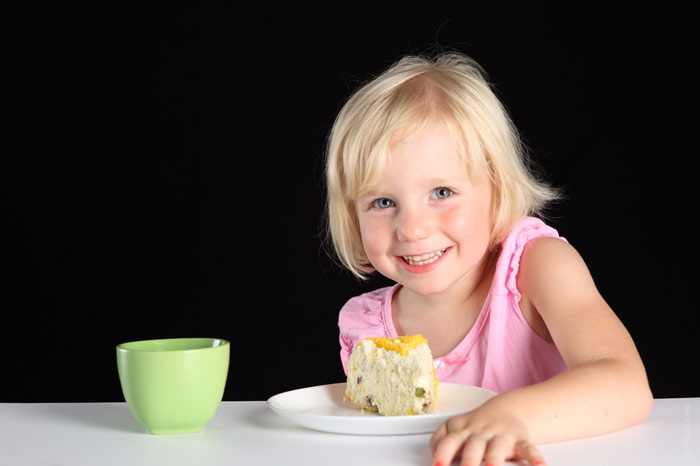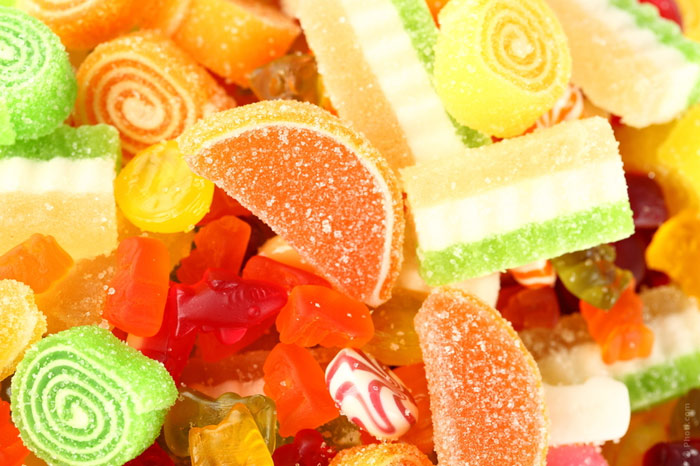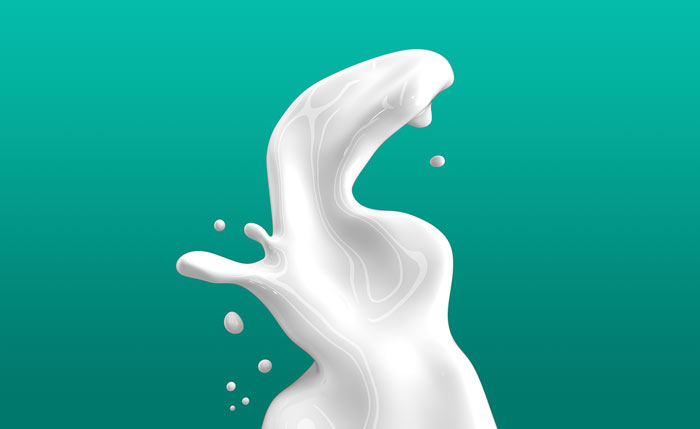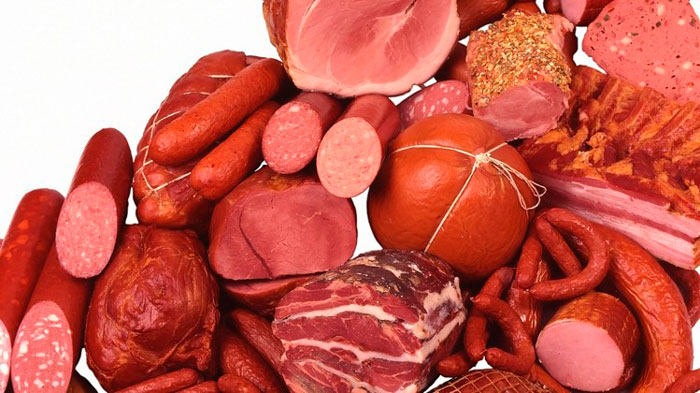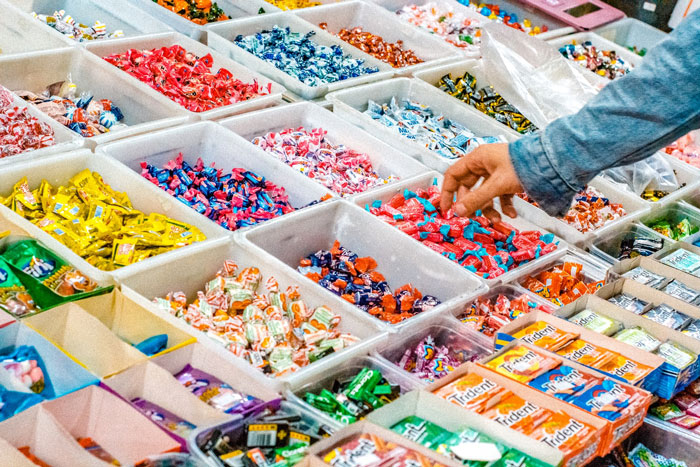These Foods You Give to Your Kids Are Dangerous
Since we all wish our children to grow up in a perfect harmony, we had better be aware of everything about their lives – and most of all, what they eat (and why they shouldn’t eat certain foods). When we – and they likewise – chew on a goodie, we don’t often consider its ingredients. Meanwhile, some of them may be unhealthy and even harmful.
These things require a thorough research, and one conducted by Bright Side unearthed a lot of hazardous information about seemingly innocuous stuff that finds its way in our little ones‘ stomachs.
The three Cs: chips, crackers, cookies
Chips, crackers, cookies are sold nicely portioned to fit better in takeaway lunches – they look tempting, but within the ingredients are positively frightening. While brands differ, each of them contains something which can give parents grounds for concern.
Partially Hydrogenated Oils – these trans-fat-rich oils can boost the body level of undesirable cholesterol.
Tertiary Butylhydroquinone (TBHQ) – it’s a commonly-used food preservative that is not wholly innocuous: it may be conducive to hyperactivity and probably to asthma, as well as lesser effects like throwing up.
Avoiding this harmful stuff, it is advisable to go for foods with healthy oils and as few artificial flavor additives as possible. They can make an excellent replacement, kale chips for one are not a whit worse than potato chips.
Drinks with brominated vegetable oil
Brominated oil is an additive that serves to prevent citrus flavorings disintegrating, and is extensively used in sodas and sport drinks. If one drinks soda containing this ingredient constantly in immoderate quantities, they can develop bromine toxicity after a while. In a number of cases brominated oil can even wreak damage to nerves, skin, and even cause memory lapses.
It is not proven definitely that small quantities can also cause harm, but the substance is clearly unhealthy, and it is known to leave residue in many organs, in the brain and in the fat. Good grounds to be worried.
Actually, the use of BVO is prohibited in Europe and Japan. PepsiCo and Coca-Cola, as a result of consumer complaints, stopped using it in their drinks, yet it remains in Mountain Dew and Diet Mountain Dew. When choosing fruity beverages or soda for your children, see that the substance is not among the ingredients (although such drinks are better to be avoided in toto).
Gummy sweets
Fruit gummies always attract kids, but mind that they are totally unhealthy! Eating a gummy is just like spooning up sugar. So sugar rush is quite common among gummy lovers. Nutrition experts say that the intake of sugar in great quantities – which applies to gummies – may conduce to hyperactivity, aggression, and impaired concentration.
Explain to the child that eating a fresh fruit or a sugarless dried fruit will be just as tasty but much more healthy than a fruit gummy.
Ice cream from the nearby supermarket
When you buy an ice cream at a store, be sure that what you eat is mostly sugar and cream – and emulsifiers which can make you obese because they interfere with the function of the useful bacteria residing in the stomach.
If the ice cream had been allowed to melt and then was frozen again, it gets very unsafe and very unhealthy because in the process listeria and other kinds of bacteria propagate on it. We have no means to make sure that was not the case, so we could get poisoned by ice cream any time.
Why buy ice cream when you can make it (or sorbet) at home using fresh fruits abounding with vitamins and freeze them. Then you will be 100% sure all its ingredients are perfectly healthy.
Pesticides
Fruits and vegetables on our tables can be infested with pests, so they are often treated with toxic chemicals. Some of them, like chlorpyrifos, are extremely poisonous. They leave on fruits residue which can even get to the inside of watermelons and oranges – and thence into our children’s mouths.
As known from studies, pesticides are detrimental to brain development; besides, exposure to pesticide residue is linked to problems with learning and behavior. Children grow hyperactive, manifest signs of attention deficit and other behavioral issues, all due to interference with the natural development of brain functions.
Unfortunately, washing doesn’t guarantee that you get rid of the pesticide residue. So you are only safe if you purchase organic vegetables and fruits for the kids and yourself, too, for pregnant women can also endanger their oncoming babies’ health.
Yogurt for kids
While normal yoghurt is just right for the diet of your beloved little one, kiddy yogurts are definitely not. They carry a lot of sugar and artificial coloring additives which are anything but salubrious.
Food dyes are not healthy in general, many of them are banned, and those which are not yet, can be guilty of producing allergic effects and add to hyperactive symptoms.
To make yoghurts sweeter and more desirable, mix in some honey, add raisins and bits of frozen fruits (your baby must be over 12 months for these sweeteners).
Arsenic in food
The poisonous substance arsenic is quite a strong carcinogen. It may come as a surprise then that arsenic can be found in food – yet it can, plus a lot of it, plus in what your children may eat in quantities, namely, in rice. Rice imbibes arsenic in the inorganic form from the environment faster than most of grains.
Little children are deeply involved since rice is contained in most of their meals: cereals, puffed morsels are made with rice.
The FDA reports that little kids take three times as much rice as grown-ups (always considering the difference in weight, of course). Arsenic is known to worsen learning abilities and hinder normal development in general.
The good thing will be to decrease the amount of rice in favor of other grains so they will get out of the danger of intaking toxinous food.
Phthalates in containers
Phthalates are chemicals used in manufacturing various plastic items, food containers among them. Being of the endocrine-disrupting kind, they hamper the function of hormones engaged in the proper development of a baby, including the brain and reproductive system development. So it’s advisable to store food in other types of containers.
Although you may hesitate about using glass with little children around, you would do well to forgo plastic. But even this precaution may not be sufficient to keep phthalates away from the baby! During the process of preparation foods (especially fatty ones) come in contact with plastics and get phthalates on from tubes or gloves. Unfortunately, even organic foods don’t escape it, because the organic standard also allows for the use of plastic processing equipment.
In order to maximally avoid these chemicals, when purchasing diary, choose low-fat or non-fat yoghurts and milk.
Microwave-popped corn
This snack is famous not only with kids, but with many adults as well, but even adults don’t always know that microwave popcorn is usually sold in potentially chemically harmful bags.
Popcorn packaging (likewise wrappings used with fast foods) incorporates perfluorinated chemicals that, once heated, give off insidious compounds that might cause developmental abilities and aggravate cancer conditions.
Why not prepare homemade popcorn heating kernels on a stove in a pan with a few drops of olive oil: in less than 10 minutes you will get a portion of nice popcorn for the whole family.
Bisphenol-A, or BPA
As if it weren’t enough, food packages also contain BPA (Bisphenol-A) which infests plastic items too. The FDA prohibited the use of BTA in bottles, cups and containers for infants, and other containers go with the “BPA-free” tags, but still you’ll do well to keep your eyes peeled for unhealthy packaging.
Also an endocrine disrupter, BPA is believed to be inimical to health, the more so if the exposure occurred in the womb or immediately after the birth. Again, the brain, the reproductive organs (male and female alike) can be affected, behavioral problems may grow worse, and cancer is aming possible threats.
Apart from plastic containers, BPA finds its way into our bodies through canned food, too. Cans‘ inside lining contains a good deal of BPA; thence it gets into the food in the can, the more actively the more acid the food is (tomato-based foods, generally). Tests show that kind of food comes with BTA in large amounts.
Therefore, when buying pasta with tomato-based sauce for the child, pick one in a glass container or juice-sort container. “BPA-free” cans aren’t worth trusting, either: you can doubt whether all the chemicals have undergone proper testing, so you are not safe.
Food coloring
When you buy kiddy candy, cereals, sodas, and they are colored in merry colors, they are sure to include food dyes. Synthetic food dyes may be responsible for hyperactivity and other behavioral outbursts, a number of skin allergic reactions (itching, hives, etc.); some of them are cancerous. If your child is sensitive to dyes, it may lead to a severe adverse reaction.
Action was taken against Red 3, which was labeled by the FDA as a carcinogen back in 1990. Research on animals showing its potential danger, it was banned for employment in beauty products and cutaneously applied medication, yet somehow it is still used in producing some foods and drugs.
This is a subtle point, since there’s no telling whether the ingredient that is described on the tag as „natural coloring“ is really harmless or inimicable, and what quantity it was introduced in. To avoid running unnecessary risks, steer clear of food that is too brightly colored and overprocessed.
Aspartame and other sweeteners
As for sweet foods, artificial sweetening agents appear to be a better bet than sugar, but these also come in many shapes, and stuff like aspartame gives grounds for concern. It proved to have caused cancer in animals in three separate studies.
There was also a study embracing humans, which was not conclusive, but it showed the stuff as cancerous. So children had better shun it since carcinogens are more dangerous at an early age. The American Cancer Society hasn’t accepted the results of these studies as the ultimate truth yet, but it’s clear that we can’t rely on aspartame.
Moreover, scientists from Massachusetts General Hospital found that artificial sweeteners conduce to growing obese, putting on excessive weight, and developing diabetes by hampering the function of a protective enzyme.
If you want to play safe, give up on aspartame-sweetened yogurts and sweet foods in favor of sugar-sweetened goodies (with a moderate amount of sugar, needless to say).
Antibiotics to be found in dairy and meat
A sound argument for enjoying organic food is food made with animals grown on antibiotics and special hormones. The worst of them is assumed to be rBGH (short for recombinant bovine growth hormone) that ended up vetoed in the U.S. and Canada.
Using hormones, breeders can ensure that cows grow more rapidly and can give more milk – but how their meat and milk actually affects consumers, we don’t know exactly, although there are misgivings that they might be carcinogenous and even lead to precocious puberty in kids.
Organic meat would be better and safer, and even better still is dairy from grass-fed cattle – they ought to be healthier without a lot of hormonal additives and antibiotics. The meat of grass-fed cows can boast more magnesium, calcium, potassium, riboflavin, thiamine; as for vitamins, vitamin A and vitamin E content is higher by 400% and more, while healthy omega-3 acids are found more by up to four times.
Various kinds of processed meat
Meat is really a problematic type of food, and processed meat even more so. The International Agency for Research on Cancer, the cancer agency of the World Health Organization warns that processed meats used for making hot dogs, ham sandwiches, snacks upped the risk of developing colorectal cancer by 18%.
So, if you want to diminish the risk of colon cancer (or other kind of cancer, for that matter), cut down on processed meat and red meat. It’s all right for the child to have a hamburger now and then, but it’s not worth your while to make a habit out of consuming hamburgers and hot dogs.
Honey
Yes, that’s right, honey isn’t welcome in babies‘ diet, especially for those who haven’t yet turned 12 months – neither raw, nor processed. Honey carries rather harmful bacteria that can occasion infant botulism – an illness that strikes at the vulnerable immune system of babies and toddlers and can result in problems like muscle weakness and difficulty in breathing.
Infant botulism in the U.S. runs to the average count of 100 cases per year.
Older children over 12 months, though, can – and must – consume honey, it’s beneficial. But for younger babies honey must be replaced by mashed fruit for healthy sweetness and natural vitamins.
What about chewing gum?
There are heaps of reasons why chewing gum must be definitely out of children’s mouths. Most of them are so heavily sugared that they cause cavities and ruin teeth. And if some particular gum is sugar-free, it could include sorbitol, a substance conducive to diarrhea.
If a kid happens to swallow a gum, that can cause real trouble. It can choke the child if it sticks in the throat, and if it is swallowed in a large lump, and then some more, it gets stuck in the digestive system and forms a block.
There is absolutely nothing beneficial in chewing gums – stay away from them completely. Why should you need them when there are lots of healthier options like chopped or mashed cucumbers, or carrots, or other veggies. In case you are not going to object to chewing gums in toto, go for xylitol ones.

